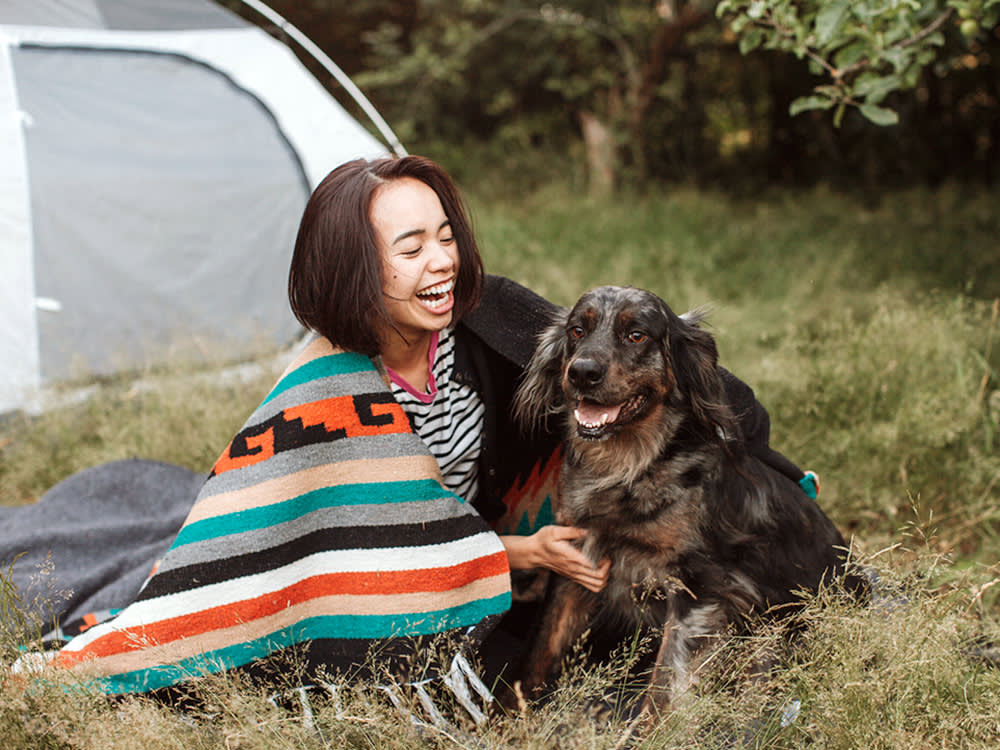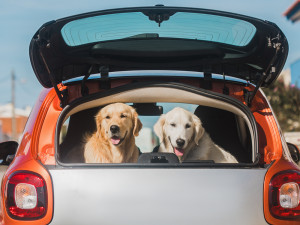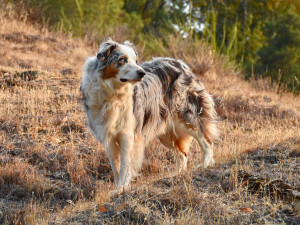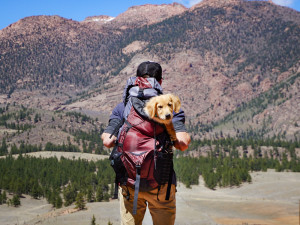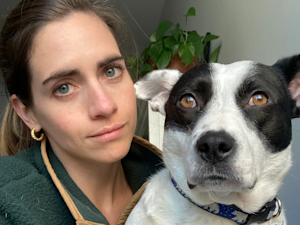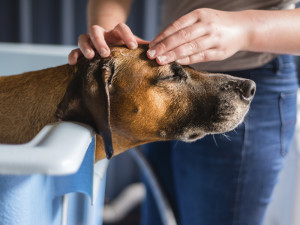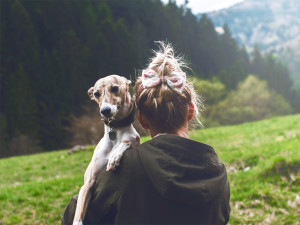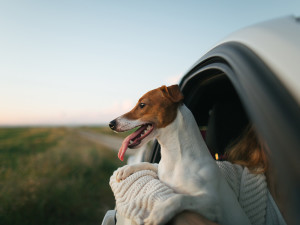Your Guide to the Perfect Camping Trip With Your Dog
Everyone is welcome in the tent, but you’ll need these items on your packing list if your pup is tagging along.
Camping is one of the best parts of summer — if you are the kind of person who likes to commune with nature (if you‘re not, then you can stop reading now). On a camping trip, you get to unplug and spend some quality time in the outdoors with your pup, sans laptop. If your dog has never been camping before, though, you might wonder how they’ll react to the new noises, smells, and wildlife that come with a campsite.
Fortunately, as with all good adventures, a little planning and preparation goes a long way. We spoke with veterinarian Dr. Wendy Hauseropens in new tab, special advisor at ASPCA Pet Insurance programopens in new tab, about the best ways to keep your dog safe, healthy, and happy on their first overnight outdoor adventure.
Planning for your trip
Before jumping into the nitty-gritty details of your packing list, ask yourself the following questions to make sure you and your pup will be both happy and safe on a camping excursion.
Is my dog in good enough physical condition to camp?
If you plan to do a lot of physical activity on your trip, such as hiking, make sure your dog is in the proper shape. If your dog has pre-existing health issues, it can’t hurt to chat with your vet ahead of time.
How much do you spend on your pet per year?
Is my dog up to date on vaccinations and medications?
Your dog should be current on vaccinations and protected from flea and tick bites, as well as heartworm disease. Some campsites may even require proof of vaccination.
Is my dog microchipped, and is all the info on their microchip up to date?
This is something your dog should have regardless, but if they were to get lost during your camping trip, you’ll want to make sure they could be identified by a microchip. You also need to make sure the address and contact info is updated on the chip.
Is the campsite dog-friendly?
Not all camping areas are dog-friendly, so double-check that the area where you’re planning to camp allows dogs before you go. Think about what activitiesopens in new tab you’ll want to do with your dog as well to ensure they’re welcome. For example, if you want to swim during your trip, make sure nearby bodies of water allow dogs.
Preparing for your trip
Once your trip is on the books, think about how you can prepare your dog ahead of time. The following can help put your dog (and your own mind!) more at ease ahead of your trip.
Know how you’ll keep your dog safe and secure.
Some campsites will require your dog to be leashed at all times. Even if that’s not the case, Hauser recommends keeping your dog secure while hiking and at your campsite to prevent any accidental encounters with wildlife, including moose, xelk, coyotes (look into coyote vests), porcupines, deer, and snakes. Consider whether you’ll use leashes, harnesses, or tie-out systemsopens in new tab.
Familiarize your dog with new equipment.
If possible, set your tent up in your backyard or living room, and let your dog explore it. If you plan to use a new harness or leash, test it out ahead of time.
Brush up on training, if needed.
Especially if your dog has a high prey drive, it’s a good idea to brush up on basic training cues, such as good recall.
Consider sleeping arrangements.
Get specific on where your dog will sleep. For example, If your dog prefers a crate, can you fit one in your tent? Will your dog sleep next to you or in their own bed? “If you are tent camping in colder climates, be sure to pack a sweater or extra blanket for your dog,” Hauser adds. “I once had our 180-pound Mastiff try to share my sleeping bag!”
What to keep in mind when camping
You may need to be extra vigilant while camping with your dog — but don’t forget to have a good time, too! Here are some tips and tricks to follow while on your trip.
Be patient!
Campsites come with new smells, noises, and sights. Give your dog time to explore the campsite. Especially on their first camping trip, it may take a night for them to settle down and feel fully comfortable.
Choose activities you’ll both love.
Maybe you love canoeing, but your dog doesn’t. There are myriad outdoor activities to choose from, so make sure to do something your dog will love and be comfortable with.
Leave no trace.
Don’t forget to leave your campsite just as you found it. “Don’t leave [dog poop] bagged on the side of the trail,” Hauser says. “There are no ‘poop fairies’ that collect these bags.”
Bring enough food and water.
This may sound obvious, but make sure your dog has enough food and water to keep their energy up during activity-filled days. Offer your dog water frequently, as Hauser warns they should not drink from streams, ponds, or lakes due to the risk of bacteria, parasites, or something that‘s becoming more and more prevalent in these bodies of water: blue-green algae.
Help your dog feel “at home.”
You can set up an outdoor bed or blanket so your dog feels like they have an assigned spot at your campsite. Bringing a familiar toy can also keep them entertained during downtime.
Keep an eye out for medical or health issues.
Watch for stomach issues or overheating, and check regularly for fleas and ticks.
Dog-proof your tent.
If your dog is sensitive to noise at night, try hooking up a small fan in your tent for white noise. If you have a particularly clever dog, keep your tent flap zippers at the top to prevent any nighttime escapes. Consider insulating your tent floor with an old yoga mat or blankets to keep your dog warm (and to protect your tent from accidental claw holes).
Keep your dog with you at all times.
Remember, you brought your dog camping so you can spend quality time together. Don’t leave them at the camp while you go hiking, swimming, etc.
Camping essentials packing list
Your dog needs a lot of the same things that you do while camping. Here’s a list of essentials for your trip.
A pet first-aid kit. In particular, Hauser recommends a kit that includes bandaging material and antihistamines (in case of bee stings).
A good leash, harness, and/or tie-out system
Food, water, and treats
Portable food and water bowls
Blankets and/or beds
Poop bags
Extra towels
A familiar (preferably non-squeaking) toy
Vaccination records
A photo of your dog (if, God forbid, you need to identify them if they are lost)
Extras you shouldn’t forget
Everyone has their own camping style, but it’s important to be fully prepared for whatever activities you’re going to get up to.
A light-up collaropens in new tab (a must for those really dark nights without any light pollution)
A cooling dog bucket hatopens in new tab
References:
Safe And Sound Under the Stars: Tips for Camping With Your Dogopens in new tab
Camping With Dogs: How to Navigate Rules and Regulationsopens in new tab
